One of the most fun decisions you can make in your life is the decision to learn a brass instrument! There are so many different approaches to learning brass instruments and it can be difficult, and even a bit daunting to know where to start. So let’s just start at the very beginning of making a sound itself, the embouchure.
Although it sounds like a complex word, the embouchure is simply the shape and position of a musicians’ mouth that allows that player to make a good sound with as much ease as possible.
Getting a good embouchure for playing brass instruments can be broken down into eight easy steps. If you follow these you’ll be playing in no time, so here are our 8 embouchure tips for brass players, from trumpet players to tuba players.
The corners of the mouth need to be fixed
ONE
The mouth corners are where your upper and lower lip meet. This part of the mouth needs to be firm. In order to facilitate this you can take a pencil and place it, eraser end, in your mouth. You should be able to hold it in your mouth fairly easily without the use of your hands.
Once you have done this, take time to notice the slight gripping feeling that occurs when you engage the muscles in the corners of your mouth.
Your chin should be flat
TWO
Say the syllable “oooh” and feel the shape your jaw and facial muscles take. You can also imagine a string pulling up from the crown of your head and one pulling down from under your jaw. These are both things that will help you keep your chin flat.
Place the bottom of your mouthpiece on the bottom of your lip
THREE
Mouthpiece placement is particularly important for brass playing. Now that you’ve gotten the corners of your lips firm and you’ve flattened your chin, you’re ready to place the mouthpiece on the bottom of your lip. This is where the pink of your lip stops and meets the skin underneath. If you get your mouthpiece placement and mouthpiece pressure correct, it should look like the pictures below.
Before using your mouthpiece we would recommend using a mouthpiece brush to ensure it is clean. This is a simple accessory that every brass player should own.

FEATURES:
Compact design
- Easy to use
- Durable construction
Denis Wick Mouthpiece Brush
When you check the price above, you’ll see there are loads of great places to buy this item. Our personal favorite is Gear4music.
It is the largest music retailer in the UK and fast becoming the most respected online music shop in the US too. Their customer service is excellent, they have competitive prices, really fast shipping, and usually have the longest guarantee.
Most professional musicians use Gear4music, so there is no reason why you shouldn’t too!
- Fits in most instrument cases
- Easy to use
- Low price
- Easy to lose!
The professional musician who wrote this article combined many things,
from the product build, manufacturer’s reputation through to feedback
from other users, to create our famous TedScore™.
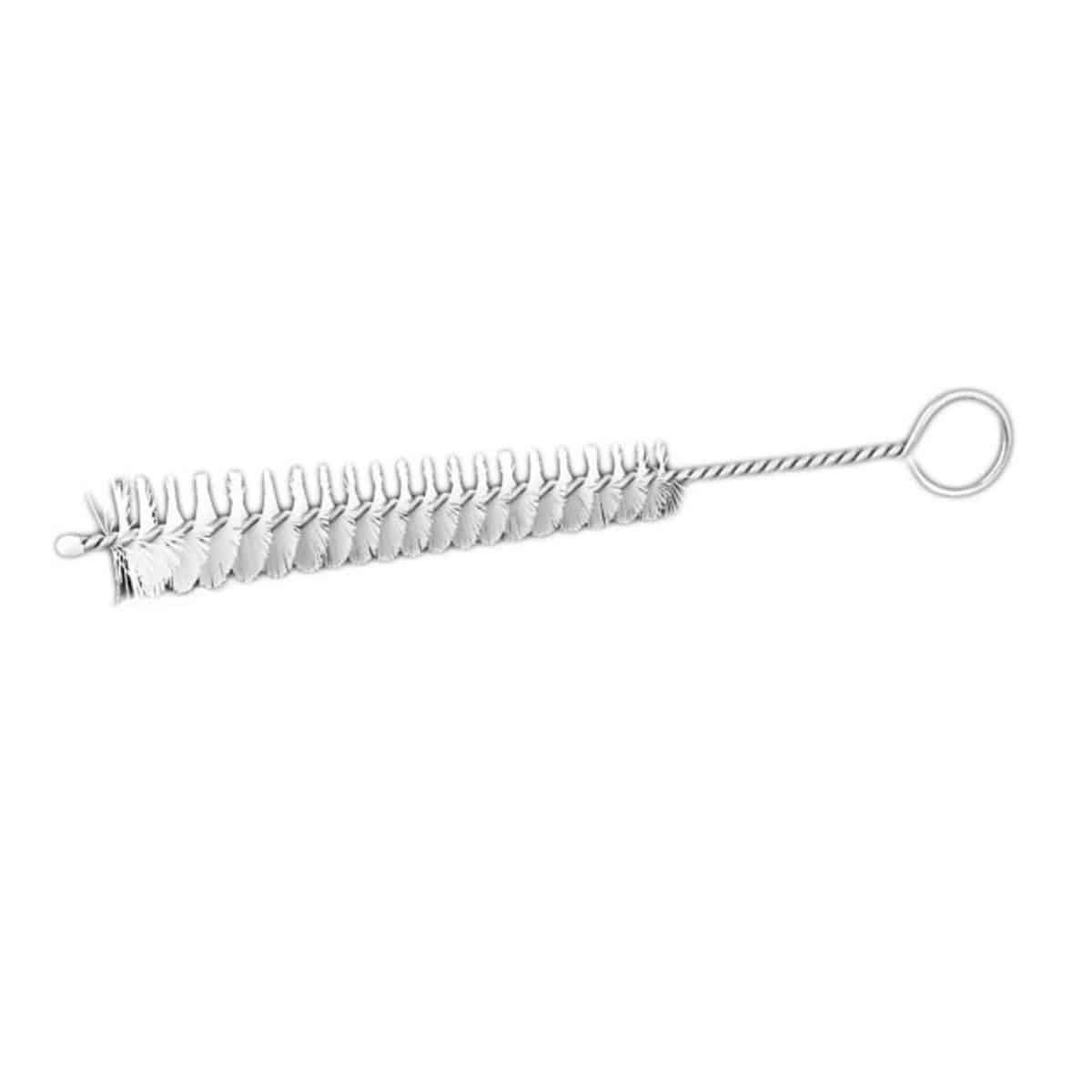
COMES WITH: A Compact design
FEATURES: Durable construction
Denis Wick
DW4918 valve brush
When you check the price above, you’ll see there are loads of great places to buy this item. Our personal favorite is Gear4music.
It is the largest music retailer in the UK and fast becoming the most respected online music shop in the US too. Their customer service is excellent, they have competitive prices, really fast shipping, and usually have the longest guarantee.
Most professional musicians use Gear4music, so there is no reason why you shouldn’t too!
- Fits in most instrument cases
- Easy to use
- Low price
- Easy to lose!
The professional musician who wrote this article combined many things,
from the product build, manufacturer’s reputation through to feedback
from other users, to create our famous TedScore™.
Breathe properly and fully
FOUR
Step four is perhaps the most important part of correctly playing brass instruments. We need to make sure that we are breathing properly and fully, and through the mouth rather than the nose.
Breathing is to brass musicians what petrol is to a car. It does not matter how well we do steps 1 to 3; it is impossible to play well without good breathing.
You should take a relaxed deep breath before you play anything. Imagine you were about to dive underwater, and think of the sort of breath you might take.
Try watching yourself in the mirror as you breathe. As we breathe in, our diaphragm drops and our ribs expand allowing the lungs to fill outwards and downwards. Make sure that you can only see your breath in this way.
Your shoulders should not rise and fall with your breath! This is a bad habit we develop in life that has nothing to do with our breathing, and actually results in tension in our shoulders, neck, and jaw. These are all things that will hinder your ability to produce a good sound and appropriate air flow. Think of breathing relaxed, low and deep into your belly. This should reduce difficulty when playing long notes.
Blow out
FIVE
Now that we’ve filled our lungs with a deep relaxed breath, it’s time to blow into the instrument.
Blowing is everything in brass playing! It’s what makes our lips vibrate inside the mouthpiece and create a sound.
Here is a simple exercise to show you if you’re breathing and blowing properly. Completely empty your lungs, blow out until your lungs are completely empty, and then hold that empty feeling for a few seconds. After this, relax and allow yourself to breathe. You’ll notice that the air comes rushing in!
Now try the opposite. Fill your lungs until they feel like bursting, hold the position, and then release the air. You’ll notice the air just rushes out.
This is the basics. Breathing and blowing is easy, we just need to make sure we are actually doing it!

Tonguing/ Articulation
SIX
The next step is to talk about tonguing, also known as articulation. This is how we start our notes on a brass instrument.
In order to properly articulate, or tongue notes, you simply need to pronounce the syllable “tooh” as we blow. This will give a really nice sound to the start of your notes.

Relax
SEVEN
Your lips, cheeks and facial muscles need to be relaxed. This may sound contradictory to point 1, but it is very important to not confuse fixed and firm corners with tense corners.
Firm sides keep the embouchure fixed in one place, unmoving. We actually want our muscles to be as relaxed as possible as this is what gives us our buzz or vibration when we play, which is essential to what we do!
Put it all together!
EIGHT
Bach TR650 Trumpet
When you check the price above, you’ll see there are loads of great places to buy this item. Our personal favorite is Gear4music.
It is the largest music retailer in the UK and fast becoming the most respected online music shop in the US too. Their customer service is excellent, they have competitive prices, really fast shipping, and usually have the longest guarantee.
Most professional musicians use Gear4music, so there is no reason why you shouldn’t too!
- Includes everything you need to get started
- Rose leadpipe produces a fantastic tone
- Designed by the famous Vincent Bach company
- Steel valves are light, smooth, and durable
- Includes backpack-style case and mouthpiece
- None
The professional musician who wrote this article combined many things,
from the product build, manufacturer’s reputation through to feedback
from other users, to create our famous TedScore™.
Finally, we just need to get the timing of all of this correct. Having simplified all these points we now need to get them moving at the same time.
The first step is breathing in. As you do this, get the shape of your lips right, form the embouchure, and have the mouthpiece on your lips. With no hesitation following breathing we blow, and at the same moment we tongue by saying “tooh”. With any luck you should be able to play a perfect note!
Check out the video below for my demonstration of all these steps put together!

8 embouchure tips for brass players
Summary
So there you have it; 8 embouchure tips for brass players, which should hopefully get you started on your musical journey. Whether you’re a trumpet player wanting to play some jazz music, a French horn player in an orchestra, or a trombonist in a brass band, getting your embouchure technique correct is the first thing brass pedagogues will advise you to get right.
Once you have overcome any embouchure problems you can concentrate on some of the other technical issues that brass players need to deal with, such as pitch, consistency, range, endurance, and tone quality. Students and specialists alike will know that there’s only so much you can pick up from lessons and articles. It’s all about getting down to it and doing a serious amount of practice!

Vital accessory for high pitched brass instruments
Denis Wick Mouthpiece Brush, Small
The Denis Wick Mouthpiece Brush, Small is ideal for keeping your mouthpiece clean, and easy to transport in your instrument case.

Vital accessory for low pitched brass instruments
Denis Wick Mouthpiece Brush, Large
The Denis Wick Mouthpiece Brush, Large is ideal for keeping your mouthpiece clean, and easy to transport in your instrument case.
FAQ's
The best way to teach brass embouchure is with a mouthpiece rather than with a brass instrument. If you follow the tips in this article you should be making a noise in no time!
Building a strong embouchure is all about practice, and ensuring you are consistently using the same muscles each and every time you play. Try to use the same jaw position each time you form an embouchure, and make sure your lip formation doesn’t change. However, make sure you don’t overpractice, because this could result in injury.
Breathing is the most important part of playing a brass instrument, so you should spend plenty of time doing breathing exercises to ensure your air stream is flawless. Playing position is also important, and you should make sure your posture is relaxed at all times. Find a system that works for you, and stick to it.
Trombonists will tell you that the range of registers they play in means their embouchure has to be mastered. Try and concentrate on being relaxed, so that the mouthpiece rim isn’t forced against your face. Working on consistency of lip compression is also important.




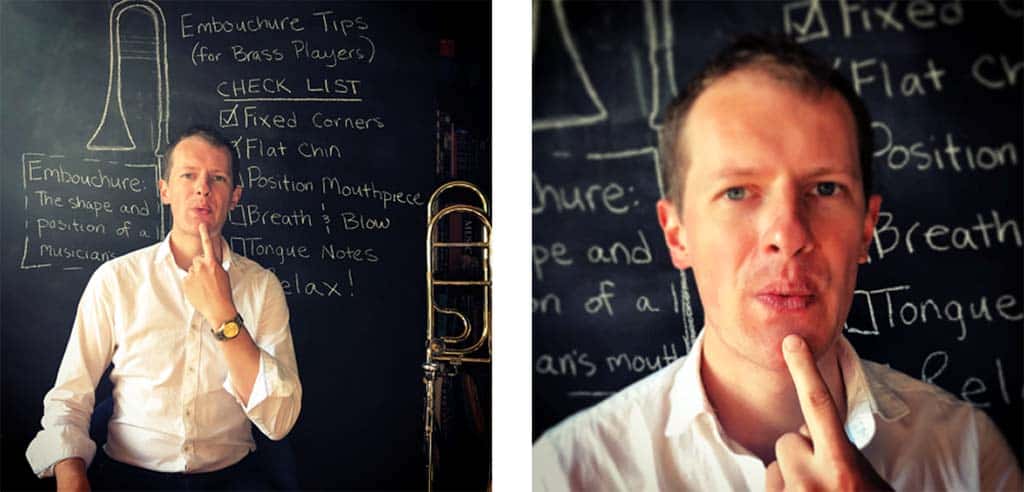
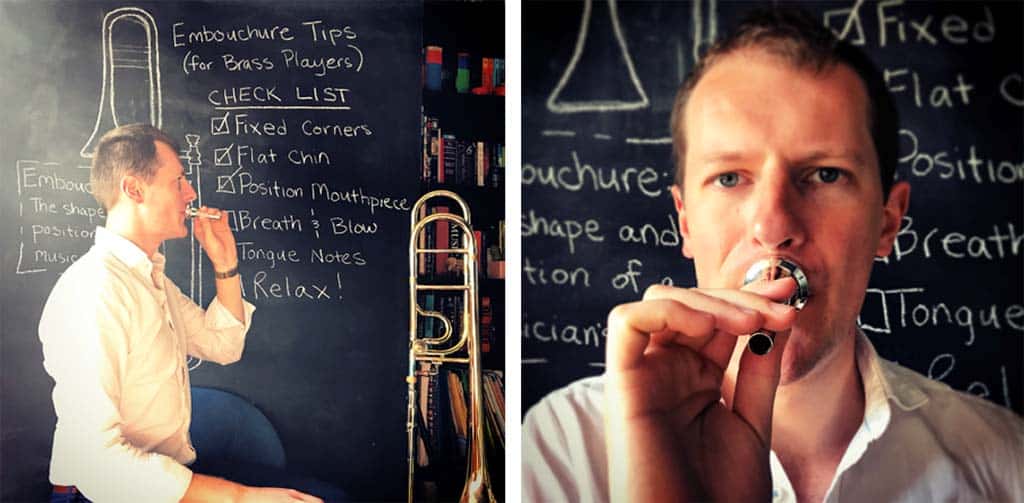
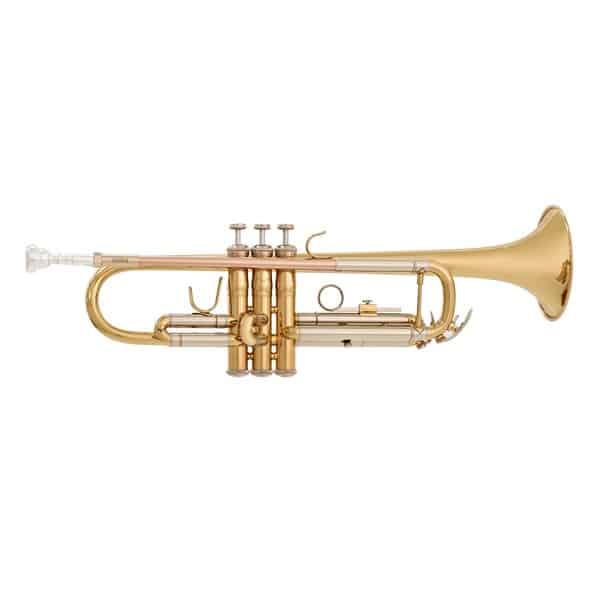









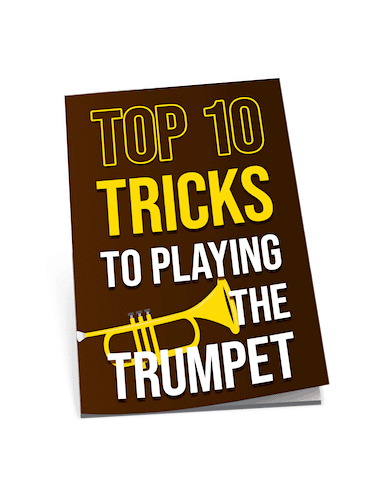
Can’t wait to put this to use.
Good luck Ellie.